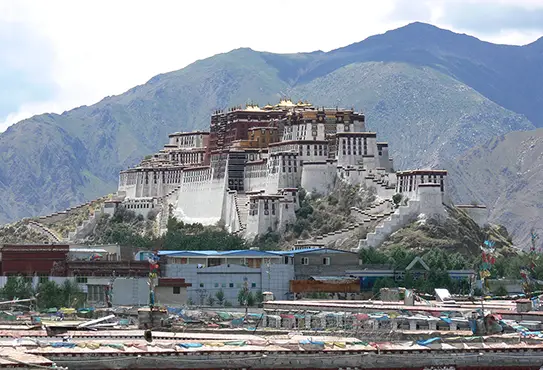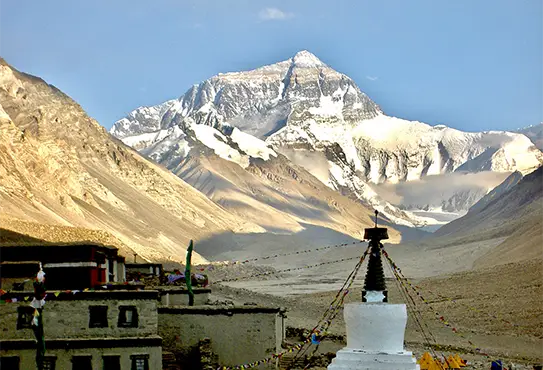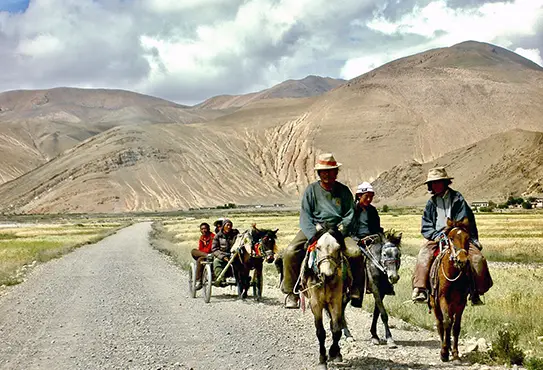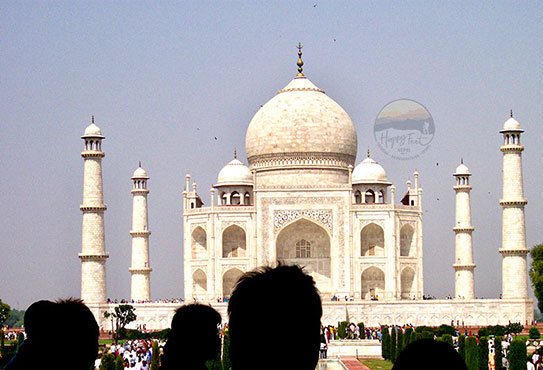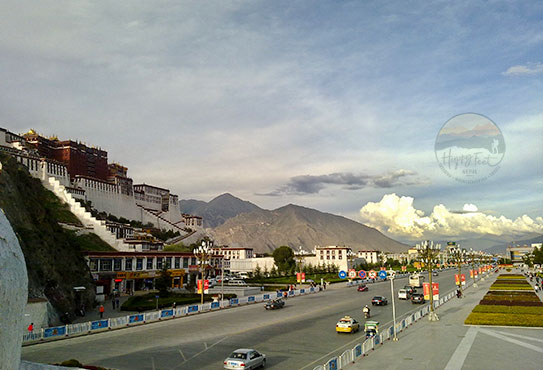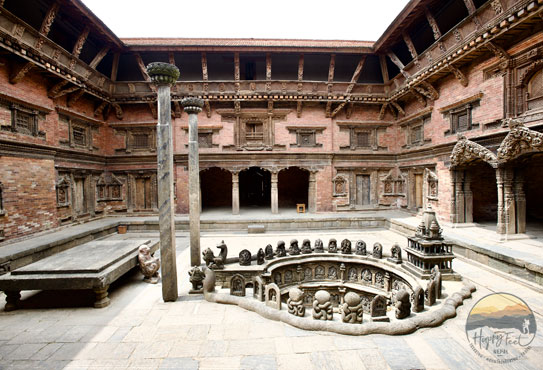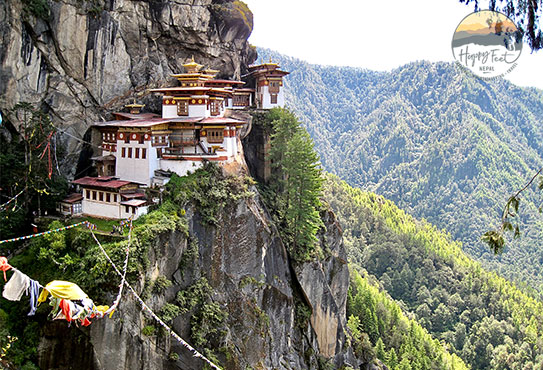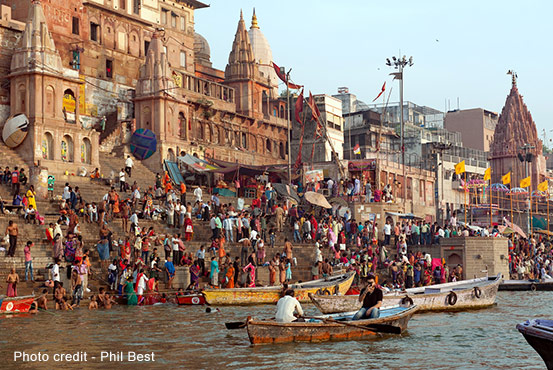-
Sunday - Friday: 9 AM - 4 PM
The Eternal Tour of Nepal – Tibet – Bhutan, and India
The eternal tour of Nepal, Tibet, Bhutan and India starts with a direct flight to Kathmandu, best known as the capital city of the Himalayan Kingdom of Nepal.
Discover the Enchanting Tour of Nepal, Tibet, Bhutan, and India. Experience Majestic Landscapes and Rich Cultures in the Heart of the Himalayas. Join on an unforgettable journey through Nepal, Tibet, Bhutan, and India. Start in medieval villages of Kathmandu before exploring sacred sites of Lhasa like Tsedang, Samye, Jokhang and Potala Palace. Visit. Conclude your adventure with a visit to Delhi and the iconic Taj Mahal. This tour promises breathtaking views and lasting memories from some of the most captivating regions of the world.
The eternal tour of Nepal, Tibet, Bhutan and India starts with a direct flight to Kathmandu, best known as the capital city of the Himalayan kingdom of Nepal. At Kathmandu, you will take two or three days to sightsee and relax in its medieval villages, which are world-famous for their largest assemblages of historical monuments and shrines ever built.
From Kathmandu, you will take a direct flight to Lhasa and spend some days in Lhasa visiting the main sacred places (Tsedang, Samye, Potala Palace, Jokhang and the two great monasteries: Drepung and Sera) and finally, flight back to Kathmandu.
Then take another flight to Bhutan, featuring panoramic views of the Himalayas, including Mt. Everest, the mother goddess of the earth. On arrival in Bhutan, spend several days sightseeing in their monasteries, dzongs, markets, towns and valleys and then take a short flight to the magnificent city of Delhi and visit the world-famous Taj Mahal, one of the most beautiful monuments dedicated to Love. Finally, after visiting all the above magical regions of the Himalayas, you are escorted to Delhi airport to see off formalities and board a flight back home with everlasting memories!
Arrive in Kathmandu, customs and immigration formalities and claim your baggage, which takes some time. Upon exiting, the arrivals get a traditional welcome from the Happy Feet Nepal representative and transfer to the hotel. Reach the hotel and the rest of the day is free with the possibility of optional excursions (not included), but you can ask to organize any of the tours or stroll through its vibrant streets.
Kathmandu, the capital and heart of the country, with three medieval cities, symbolizes Nepal’s everything. Having lived through the several ruling dynasties of Buddhists and Hindus, the culture and society of Kathmandu Valley have evolved through time to give it more than a unique feature. Today it is an urban city, and still rapidly increasing, that has its ancient myths and, at the same time, is testimony to the greatness of people who have lived there for time immemorial.
Accommodation in Hotel Shanker, a 4-star hotel.
Breakfast at the hotel. In the morning, visit Swayambhunath, located on a lovely little hill to the west city centre, the most sacred site for Buddhists. The self-originated shrine is believed to have been built in its current form around 250 B.C. The stupa, painted with a pair of the Buddha’s all-seeing eyes, stands on a lotus mandala base on all four sides. The site offers a complete view of Kathmandu Valley, its surroundings, and the northeastern Himalayas.
In continuity, drive to Patan, one of the three medieval cities of Kathmandu Valley and one of the World Heritage sites among the seven World Heritage sites of Kathmandu Valley, located 7-kilometres southwest of Kathmandu. The city known as Lalitpur, the City of Arts, was a renowned Buddhist centre in Asia and has four Ashoka-built Stupas and a multitude of miniature stupas, monasteries, viharas and temples. At Patan, we visit its Durbar Square, the Golden Temple, Thousand Buddha, and its museum, among other sites, which explain Buddhism and Hinduism in extensive labels within the living traditions and context.
In the evening, visit the Durbar Square of Kathmandu, an example of the urban architecture of the Malla dynasty with 19-storey buildings, temples and palaces, and the residence of the living goddess Kumari. Kathmandu Durbar Square, the old palace complex that exhibits a mass of temples and palaces, including the Gaddi Baithak Durbar, constructed in 1908, the Basantapur Durbar, or the old Royal Palace, and the Kumari Chowk or the residence of the Living Goddess. Basantapur is amongst the most attractive sites in the bustling centre of Kathmandu, and a Western traveller around two hundred years ago wrote that there were more temples than houses and idols than people in its city. Lying in the heart of Kathmandu, the Durbar Square is a World Heritage Site by UNESCO and not to miss sites. The individual building, palaces, and temples have intricately carved doors, lattice windows, and struts full of mythic and erotic figures.
We finalise with the tour and ride a rickshaw and roll through its old city market centre, the Ason Bazaar, seeing what the Nepalese people buy and sell in their daily run.
Accommodation in Hotel Shanker, a 4-star hotel, breakfast included.
Breakfast at the hotel. The Pashupati is one of the holiest sites in the Hindu World. Buddhists also worship it as one of their Dharma Protector, the presiding deity of Hindu Nepalese royalties. Pashupati is also the cremation ground in the ghats (cremation group) along the bank of River Bagmati, where the recently deceased Hindus of the Valley are cremated.
Then visit the Boudhanath, the great stupa of Nepal, one of Nepal’s most important Buddhist sites, with a diameter of over 200 meters.
Then we take a 13-kilometres drive to Bhaktapur, east of Kathmandu. Its original name is Bhadgaon, or the village of Devotees is one of the living museums of Kathmandu Valley. Bhaktapur is filled with the 55-windowed Royal Palace, the Palace of the Kumari, the temple of Taleju, the temple of Pashupati, the main square of Taumadhi Tole, Nyatapola Temple (the most imposing the tallest such architecture in all of Nepal), the temple of Akash Bhairab (the second most important temple of Bhadgaon), the DhaHateya and the Square of the Potters. UNESCO recognises Bhaktapur as a World Heritage Site.
After the visit, we leave by road toward Nagarkot, at an altitude of 2,099m and 32km east of Kathmandu or 19 kilometres northeast of Bhaktapur. Nagarkot is one of the most beautiful hill resort areas to enjoy sunrises and Mountain Range views, from the Langtang to Everest. Accommodation at the Club Himalaya, a 4-star hotel, breakfast included.
Accommodation at the Club Himalaya, a 4-star hotel, breakfast included.
Transfer to the airport for the flight from Kathmandu to Lhasa on China Southwest Airlines. This one-hour trans-Himalayan flight will allow you to have an aerial view of the Mt. Everest and other Himalayan peaks. We’ll arrive at Gonggar airport at around 1.30 p.m., local time. After clearing immigration and customs you will be received by our Tibetan guide with a traditional Khata, a ceremonial scarf, and drive to Tsetang for 55 kilometres. Arrive and get distributed rooms and free time for rest and acclimatization.
Tsetang is located on the southern bank of the Yarlung Tsangpo River, about 160km south-west of Lhasa at an elevation of 3,600m, and is known for its grazing lands, beautiful river valleys, snow-capped mountains and glaciers. It has a rich variety of flora, distributed vertically according to elevation. Highlights in Tsetang include the first Palace of Tibet, its first monastery, the first Buddhist Hall, and the Tibetan kings’ tombs.
Breakfast and start the tour with Yumbu Lhakhang, the first palace in Tibetan history, built in the 2nd century, on top of a hill. In the palace are the statues of three periods of Buddha. We further continue and visit the Tradruk Temple, a monastery established by King Songtsen Gampo in the 7th-century and belonging to the Gelugpa sect. The ancient images preserved here are made of bronze, and the corridors are full of murals. Finally, visit several Tombs of Ancient Kings; eight or nine tombs are still in good condition.
Lunch and departure to the Samye Monastery, located on the northern shore of the Yarlung Tsangpo River. It is a 206 kilometers drive and takes 4 hours. Reaching Samye you will check into your hotel and free time.
In the evening session, visit the Samye Monastery, considered the first monastery in Tibet, was built in 779 under the supervision of Guru Rinpoche and the Tibetan King Trisong Detsen. The magnificent and unique central hall is three stories high. The first floor is in the Tibetan style, the second in the Han style, and the third in Nepal style. The halls of the monastery contain many statues and murals. The monastery has bronze bells, lions and carved marble tablets that record the development of Buddhism in Tibet. It attracts thousands of visitors each year who come to pay their respects to the Buddha and to learn more about Tibetan Buddhism.
Early morning, before breakfast, hike to Hepo Ri. Hepo Ri is a mountain 400m east of the Samye Monastery, and it requires a 30-minute hike. The locals consider it sacred and a popular pilgrimage site for Buddhists. Many important deities and spiritual beings are believed to reside there, and pilgrimage to the mountain can bring great spiritual benefits. The trail leads from Samye’s East Gate, and a side ridge climbs to an incense burner point with prayer flags, with fantastic views of Samye below. Hepo ri is also said to be where Guru Padmasambhava conquered the demons that disturbed the founding of the Samye Monastery. King Trisong Detsen established a palace here. Hepo Ri is among Tibet’s four sacred hills: ChagpoRi in Lhasa, Gangpo Ri at Tsetang, and Chuwo Ri at Chushul. King Trisong Detsen established a palace here. Trails branch off here from the road leading from Samye’s East Gate. From Hepo Ri, descend south along a paved path and enjoy great views.
Back to the hotel, breakfast and leave for the sacred Chim-Puk tour. Chim-Puk is a sacred cave site where Guru Rinpoche, also known as Padmasambhava, meditated and attained enlightenment. Inside the cave are several small chambers, each containing a statue or a mural of a different Buddhist deity. Visitors to the cave pass dozens of sacred caves and enjoy its serene atmosphere, which makes it an ideal place for meditation and contemplation. The tantric practitioners of Chim-Puk were once famed for protecting fields from hailstorms. Those having an extra day at Samye can reach the summit of Chim-Puk and enjoy a broader view of Yarlung Tsangpo Valley, a whole-day trip.
Back to the Hotel, Late lunch and drive to Lhsa 160 kilometres. Lhasa, the capital of the Tibet Autonomous Region, is located between 290 36’N and 190 06’E at the north bank of Kyichu river, a tributary of the Yarlung Tsangpo river, at an altitude of 3650 meters above the sea level. The Lhasa has a history of more than 1300 years and has been the centre of politics, economy, culture, and religion in Tibet since ancient times. “Lhasa” in Tibetan means “the land of Gods”. In Lhasa, there is a plentiful of scenic spots and historical attractions, among which Potala Palace, a thirteen-story, 1000 room Palace of the Dalai Lama, Norbulingka, the summer Palace of the Dalai Lama, Drepung Monastery, Sera Monastery, Jokhang Temple, the holiest shrine of Tibet, and the famous Ramoche temple.
Breakfast and pay a visit to the Jokhang Temple, situated in the centre of the old section of Lhasa called Barkhor, was built in the mid-7thcentury AD. It was extended later by successive rulers and has now become a gigantic architecture complex. Located in the east, and facing the west, Jokhang is a four-storeyed temple with splendid golden roofs. Its architecture features art from the Tang Dynasty but also assimilated many features from both Nepalese and Indian Buddhist temples. The murals in the temple depict the life stories of historical and religious characters. The temple houses many ancient relics, including statues of King Shrongtsen Gompo, Princess Wencheng, Princess Brikuti Devi (Nepalese). Princess willow (a tree), and the uncle–Nephew Alliance Tablet. Jokhang is Tibet’s spiritual centre and the holiest destination for Tibetan Buddhist pilgrims. It contained a sitting statue of Shakyamuni when he was 12 years old.
We then continue to Potala Palace, one of the most famous architectural works of the Tibetan World, which sits on top of the red hills in Lhasa. It was built in the 7th century after the Tibetan King Shrongtsen Gampo married Princess Wencheng of the Tang court. The Palace was built to provide a court with a place of worship and meditation. In the mid 17th century, it was rebuilt by the 5th Dalai Lama to its present size and became the winter Palace of the Dalai Lamas. The construction took fifty years from beginning to completion.
The Potala Palace is divided into two sections, namely, the red Palace and White Palace. The total height of the Potala is 117 meters spanning thirteen stories. The length of the Palace from east to west is 400 meters, and the breadth from south to north is 350 meters. The building was constructed with stone and timber with golden roofs. It is a majestic architectural masterpiece.
In the evening we visit Barkhor Street, the holiest pilgrimage site in Lhasa, with innumerable shops, and wayside peddlers intermingle with devotees walking clockwise around the Jokhang. There are four huge prayer flags in each corner of Bhakor square, known respectively as Gadhen Dharchen in the northeast, Juyak Dharchen in the west, Kelsang Dharchen in the southwest and Shar Kyaring Dharchen in the southeast. An evening walk (Kora) around the Jokhang Temple, together with the Tibetan pilgrims is a lifetime experience.
Today we will visit the Drepung Monastery, situated on the slope of Wuze Hill, five kilometres northwest of Lhasa. It was built in 1416 and is the largest of the monasteries of the Gelugpa sect. It covers an area of 250,000 square meters. In its heyday, it had more than 10,000 monks.
Finalize the visit to the Drepung and proceed to the Norbulingka, the summer palace of the Dalai Lama and currently a museum.
At around 14:00 hours visit the Sera Monastery located about 3km north of Lhasa and at the foot of Tatipu Hill. Sera is one of the most important monasteries and sacred to the Gelugpa sect, founded by Tsong Khapa or yellow hat sect, a branch of Tibetan Buddhism, in 1419, once had 7,000 monks. It has several buildings, the main ones being the Salón Coquen and the specialized schools. Inside the monastery there are preserved sacred scriptures written with gold dust, murals and unique statues, with main statue of Hayagriva, the Horse-headed (protector of the Dharma). This monastery is famous for the monk’s debate for a few hours each afternoon. There is a question-and-answer session during this ritual where a senior monk asks a junior with grimaces, applause, and feigned threats. The important part of this ritual must go through the knowledge of the theosophical questions of the Tibetan lamaistic Buddhist. A very curious moment for the tourist.
Breakfast and drive to Gonggar airport and board a flight to Kathmandu. Land in Kathmandu airport and get escorted to your hotel. Rest of the day is free.
Breakfast in the hotel. In the morning, transfer to Kathmandu airport to fly to Paro, offering one of the best views of the landscape and the mountains from the air. Paro is the only gate to Bhutan by plane and the most beautiful valley at 2280m in the west with its dominant Paro Dzong, the first Dzong in Bhutan, above the glacial Paro River. In this valley, Mt. Chomolhari predominates at 7,320m, and the Pa Chu (Paro River) is born from its deep gorges. Paro is Bhutan’s most fertile valley, where the most famous red rice is grown along the terraces of Bhutan’s oldest temples and monasteries. In addition to the colourfulTsechu spring festival, Paro has several places and monuments that captivate the visitor. Bhutan’s official name, ‘Druk Yul’, means the ‘Land of the Thunder Dragon’, officially portrayed on the country’s flag.
Bhutan is perhaps the least modernised and most mysterious country in South Asia and remains very cautious while contacting the outside world. The flow of tourists into Bhutan is regulated, and the government makes great efforts to preserve and strengthen the country’s religious and cultural traditions. Arrival, visa procedures and transfer to the hotel. The rest of the day is free.
Accommodation at Hotel Dewachen, a 3-star hotel, full board.
Breakfast at the hotel. Full-day visit to the city and Ta Dzong. Ta Dzong, the National Museum of Bhutan since 1967, with over 3,000 Bhutanese art, masterpieces of bronze statues and other rare collections, explaining the 1500 years of the cultural heritage of Bhutan in detail. The museum displays thangkas, artefacts, costumes, stamps (even talking stamps), and objects from archaeological excavations.
The seven-storey museum offers various aspects of Bhutanese culture and history dating back to the 7th century. In the afternoon, we visit the Tiger’s Nest or the Taktsang Monastery, 10km further up the Paro Valley and one of Bhutan’s most popular spiritual sites, perched precariously on a sheer cliff at 900m high. This important site suffered a burning down in 1998 and was restored to its original form. You can climb it on foot for about 3 hours (1h30 up and down – 3km approx); those not willing to walk can see the monastery from its hill base, below the monastery. We will also visit Rinpung Dzong, one of the most beautiful towers in Paro carved in wood, and see the city and markets of Paro.
Accommodation at Hotel Dewachen, a 3-star hotel, full board.
Breakfast in the resort. In the morning, drive to Wangduephodrang via Punakha city, crossing Dochula Pass at 3,100m altitude. Weather permitting, you can see the eastern Himalayan range, including the highest mountain in Bhutan, Mt. GangarPunsum, at 7,520m. After crossing the pass, the road descent until it reaches the warm valley of Lobesa. Next, you will visit Punakha Dzong, built between two rivers in the 17th century. Until 1955, Punakha remained the winter capital of Bhutan (there is only one capital now, Thimphu). Punakha is still the headquarters of the Head Abbott, the Je Khenpo, and his monks move here every winter. Every year during February, a procession is known as Punakha Serda held here to commemorate the victory over the Tibetan invaders. Four catastrophic fires and an earthquake damaged the Punakha Dzong, but the present King fully restored it. Therefore, depending on our timing for today, we may visit the Dzong tomorrow. NOTE: Please be noted that the Dzong is frequently closed without prior notice. Finalise your visit and arrive at Wangduephodrang, a typical Bhutanese town known for its fine bamboo works and carved stones and where we will visit its bustling market.
Accommodation at Hotel Kichu Resort – Wangdi, a 3-star hotel full board.
Breakfast at the resort. Departure by road towards Thimpu through the Lobesa Valley. A short walk through farms and fields to the Chime Lhakhang Monastery dedicated to the famous Lama Drukpa Kunley, the Divine Madman, a renowned saint in Bhutan, dedicated to fertility, and many couples go on pilgrimage. We access the temple through a short walk through the farms and fields surrounding the temple. Then continue the drive to Thimphu, situated on a broad green valley surrounded by terraced rice fields. Thimphu, established only in the 1950s, is a town of about 50,000 people and is the administrative centre of Bhutan—arrival in Thimpu and accommodation. The rest of the afternoon remains in leisure to visit the city on your own. Recommend visiting the Norzim Lam (Norzim Street) with shops, including the goods imported from India and China.
Accommodation at the River View, a 3-star hotel, full board.
Breakfast at the resort. Thimphu, the modern capital of Bhutan, is located 2,300 meters in a valley crossed by the Wang Chu (river) and preserves a national architectural style. Start the day with a visit to Memorial Chorten, built in memory of King Jigme Dorji Wangchuk in 1974. The paintings and images inside hold a rare sign of Buddhist philosophy, the 12th-century Changangkha Monastery and the oldest in Thimphu, the petting zoo to see the rare Motithang (Takin), the national animal of Bhutan, and continue down the road for beautiful views over the Thimphu Valley. Next, visit the new convent temple of Drupthob. In the afternoon, drive to the impressive Tashichho Dzong, the summer palace of Bhutan and the power seat of the Bhutanese Government, including the ministries and departments. This fortress was erected in 1641 by Ngawang Namgyal and later turned into a Dzong is one of the largest, with over 2000 monks in residence.
Accommodation at the River View, a 3-star hotel, full board.
Drive to Paro airport and board the flight to Delhi. During the journey, one can enjoy panoramic views of the Himalayas, including Mount Everest, on a clear day. As you enter the midway, the landscape transitions from the rugged mountains of the Himalayas to the flat plains of India with a more urban and bustling atmosphere. Upon landing at Indira Gandhi International Airport (IGIA), you will notice the contrast of vibrant city life and a sharp cultural shift between the two countries, making for an exciting arrival.
Upon exiting, the arrivals get a traditional welcome from the Happy Feet Mountaineers representative and transfer to the hotel (room check-in is available from noon). Check into your hotel and freshen up.
In. the afternoon, visit India Gate and then head to Raj Ghat, the memorial of Mahatma Gandhi. In the evening, explore the markets of Connaught Place for shopping and try local street food.
Delhi, also known as Dehli or Dilli (the misspelt form of Dhillika), is a city with a rich history. It was the first of seven medieval towns, also known as Yogini Pura, which translates to “Fortress of the Yoginis,” referring to the female divinities. The city is a blend of ancient Indian, medieval Moghul, and 19th-century British heritages, making it a unique and fascinating destination.
Morning breakfast at the hotel. Later, a full-day visit to Old and New Delhi, a panoramic tour of Delhi, taking in the breathless pace of this sprawling city and viewing some of the ancient Indian, medieval Moghul, and 19th-century British heritages. Starting the drive past Red Fort, visit Old Delhi in Ricksaw and see Chandni Chowk, visit the Bangla Sabih Sikh Temple and observe the fervour with which the Brotherhood members listen to the Book reading. Then, visit the Great Jamma Masjid Mosque, built by the Shah Jahan, rising in the middle of the old city of Old Delhi. Then, pass through the Rajpath. We visit Humayun Tomb, the city Edwin Lutyens built to be the British capital in the Anglo-Indian style. Later, visit the Qutub Minar, the oldest monument in Delhi, which was declared a UNESCO World Heritage Site in 1993.
This morning, drive to Agra, either by road or air-conditioned train, schedules permitting. Arrive at Agra and check into the hotel. Free time for lunch and visit Agra, including Red Fort and Marble factory. The imposing Red Fort, or red sandstone Agra Fort, was principally erected as a military establishment by Akbar in 1565, when he was just 23, and was partially converted into a palace during Shah Jahan’s time. Within the Fort are several fascinating buildings, including the Octagonal Tower, the Jehangir Palace built by Akbar for his son Jehangir, and the Pearl Mosque made of Marble. Then there is the Hall of Public Audience, best known for its Peacock Throne and white marble-built private palace known as the Khas Mahal. Agra is also famously known as the city of Marble; therefore, visit its marble factories. Later, visit the Tomb of Itimad-ud-Daulah, also known as the Baby Taj Mahal, and admire the artworks on the Marble. In the evening, explore the markets of Agra on foot and buy souvenirs for families.
This morning, take a sunrise visit to the main attraction of Agra: The Taj Mahal, one of the world’s most beautiful buildings. Called “A Dream in Marble,” the Taj Mahal was built by Shah Jah as a memorial to his queen, Mumtaz Mahal. Shah Jah built the Taj to enshrine the body of his favourite wife, Mumtaz Mahal (the elect of the palace), who died shortly after the birth of their 14th child in 1631. The Taj Mahal – often described as the most extravagant monument ever built, a monument of love constructed by 20,000 men from Asia, commenced in 1632 and was completed in 1653. The Marble used for the memorial was sourced from Makrana, near Jodhpur, and precious stones, including amethyst, malachite, onyx, lapis lazuli, turquoise, jade, crystal, and mother-of-pearl, were imported from Persia, Russia, Afghanistan, Tibet, China, and the Indian Ocean. The Taj Mahal is located at the banks of the river Yamuna, reflecting her in the waters of Yamuna, and you can look at it from nearby Agra Fort.
Admire the magnificent Taj Mahal, spend time exploring the gardens and taking photos and return to the hotel for breakfast. Enjoy some free time and prepare for mid-day departure to Delhi. Arrive in New Delhi and, depending on your flight time, free time to enjoy shopping in the bustling markets of Delhi. In the evening, we bid you farewell and transfer you to the airport, where you will complete your check-in formalities, pass through immigration, and depart for your onward destination.
